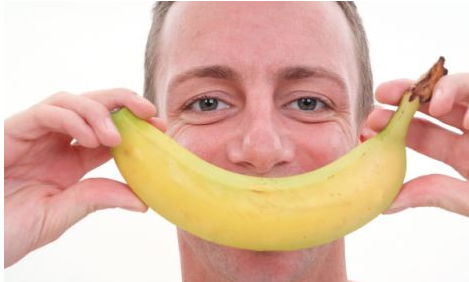Break Free From the Carbon Confusion
by Elizabeth O'Brien | November 14, 2012

Did you know that...
- Taking a one-mile trip by bicycle can actually be 18 times worse for the environment than that same journey on an average city bus—if you’re fueling your body on asparagus flown from halfway across the globe?
- If you’d eaten bananas instead of freighted asparagus before your bike ride, the carbon cost of your trip would be one-third that of taking the bus?
- Having a mortgage of $150,000, with 5 percent interest, generates the same amount of carbon emissions per year as 10 cremations?
- The number of children you have will probably be your most environmentally relevant act?
If you answered yes to all of the above, then you’ve probably already read How Bad Are Bananas? The Carbon Footprint of Everything—or you must be the Oxford University physics graduate who wrote it! With a polite and entertaining style, Mike Berners-Lee explores the carbon emissions of everything from small to large, be it an email, a red rose, a heart bypass operation, or even a nuclear war.
This book certainly deserves its title: The scope of information crammed inside these acid-free, 100-percent postconsumer pages is phenomenal. Even the carbon footprints of alternative choices have been calculated. For example, a strawberry-loving reader would learn that a pound of strawberries grown in-season in her home country (at 270 grams of carbon dioxide-equivalent) would have 8 percent of the carbon cost of a pound of off-season strawberries imported by plane (at 3,300 grams).
Easy! Like a foreign language dictionary that translates carbon-confusion into carbon-clarity, reading just one of the bite-sized paragraphs could plunge you into a deep re-evaluation of your “environmentally friendly” practices.
I had a housemate last year who was ardently committed to lessening her impact on the environment. She would spend more than $5 every 2–3 weeks on biodegradable trash bags. I sensed that something about this didn’t quite make sense, and when I questioned her choice, she argued that it was “better than nothing.”
But wait! The bags were being filled with general, non-biodegradable waste, and were therefore going to landfills. So even if everyone used biodegradable bags to collect their household waste, only a very, very small amount of this material would actually be biodegradable and decompose.
Given this miniscule difference in waste savings—at a financial expense roughly 10 times that of regular, non-biodegradable trash bags—the option of “doing nothing” would have been better! In fact, since reading How Bad Are Bananas, I now know that the $9 that my housemate could have saved every 4–6 weeks on trash bags could have canceled out the carbon emissions of a one-way economy-class flight from Los Angeles to Barcelona, if it had instead been donated to a well-executed rainforest preservation project. And that a year of this monthly donation could have canceled out the yearly carbon emissions of the average U.K. inhabitant!
So does this book imply that you should do the world a favor by donating all of your assets to a rainforest preservation project before, say, foregoing a carbon-intensive coffin and feeding your body to an endangered species of carnivore? NO! But it does suggest that it is pointless to be concerned about using electric hand-dryers instead of paper towels in public restrooms if you intend to have 13 children or if you fly across the Atlantic twice a year.
By doing the math for you, this book equips you with the knowledge that can allow you to be more realistic—and more efficient—in your decision making than you’ve been before. It is a rigorously researched guide to choosing the worthwhile battles that don’t detract from your life.
Berners-Lee wrote the book to increase the reader’s capacity to make a difference in addressing climate change, though not necessarily a person’s desire to do so. As such, it may prevent a few broke and exhausted activists from collapsing under the strain of ill-informed do-goodism. It may also introduce an environmentally indifferent public to the notion that a low-carbon lifestyle does not require perpetual sacrifice.
But Berners-Lee’s humble arrangement of facts neither guilt-trips nor congratulates: it merely informs. It’s the perfect easy-read for anyone with an appetite for relevant, accessible facts. Browse it for 15 minutes and get a taste of how much of what you do actually does matter to the world!
Elizabeth O’Brien lives in Dublin, Ireland, and is an intern at New Dream.

